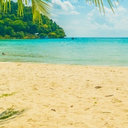
A.s. SilvaUniversity of Porto | UP
A.s. Silva
About
47
Publications
4,173
Reads
How we measure 'reads'
A 'read' is counted each time someone views a publication summary (such as the title, abstract, and list of authors), clicks on a figure, or views or downloads the full-text. Learn more
74
Citations
Publications
Publications (47)
This work is a follow-up study on the exposure to indoor radon levels in Portuguese thermal spas. The previous research involved 16 thermal spas, where radon measurements in air and thermal mineral water were performed twice a year, from 2012 to 2016. These studies revealed concerning radon concentrations both in air and water. Therefore, a follow-...
The National Radon Action Plan (NRAP), prepared by the Portuguese Environment Agency (APA), meets the recommendations made by the international organizations (WHO, IAEA, UNSCEAR, ICRP) and presents a set of requirements and actions that aim to reduce the long-term risks arising from exposure to radon in homes, public buildings and workplaces. Accor...
The European Directive 2013/59/Euratom sets the basic safety standards for protection against hazards resulting from exposure to ionising radiation. The document intends to provide recommendations and tools for better protection of people in workplaces and dwellings. Exposure to radon gas is introduced for the first time into the radiological prote...
Radon is a radioactive gas produced from the decay of uranium. It can be found in many types of soils and rocks, such as granite. Radon is the most important cause of lung cancer after smoking. The aim of this study was to evaluate continuously the radon concentration in two Portuguese thermal spas (A and B) between December 2018 and August 2019 (a...
In Portugal, most of the average annual dose to which the population is exposed by natural sources is from radon (57%) and terrestrial gamma radiation (18%). In this study, the indoor gamma radiation dose rates were evaluated in 15 Portuguese thermal spas between 2011 and 2015. Gamma radiation dose rates were measured with a Geiger counter type GAM...
In this study, an assessment of indoor radon concentration and gamma dose rates were carried out in 16 Portuguese thermal spas. Indoor gamma dose rates measurements were made using a Geiger counter (Gamma Scout – GS3) and radon concentration measurements were carried out using CR-39 detectors. The detectors were exposed for an extended period of ti...
In countries with long historical tradition in thermal water therapy and with several mineral-medicinal thermal sources, workplaces within thermal centers may be a source of radon exposure which may be intensified if these are located in regions of high level of natural radiation.
According to the EU Directive 96/29/Euratom (repealed by the Directi...
The concentration of radon was assessed in the indoor air of 14 thermal spas and in the home of a selected worker from each thermal spa. The measurements of the indoor radon concentration were carried out using CR-39 detectors, placed in both the workplaces and workers' homes, exposed for an average period of 45 days, in different seasons of the ye...
Radon is the most significant source of exposure to naturally occurring radionuclides which may be found in indoor environments, such as homes and workplaces. It is naturally present in soils, rocks and in thermal mineral waters. Thermal spas are one of the professional sectors with potential for exposure to radon in large part due to the inhalatio...
Radon concentration measurements were performed in indoor air and in natural mineral waters in seventeen Portuguese thermal spas used for therapy, drinking and irrigation purposes. The gamma doses rates were also assessed in different workplaces of the considered thermal spas. The radon concentration was measured in water samples taken from differe...





































